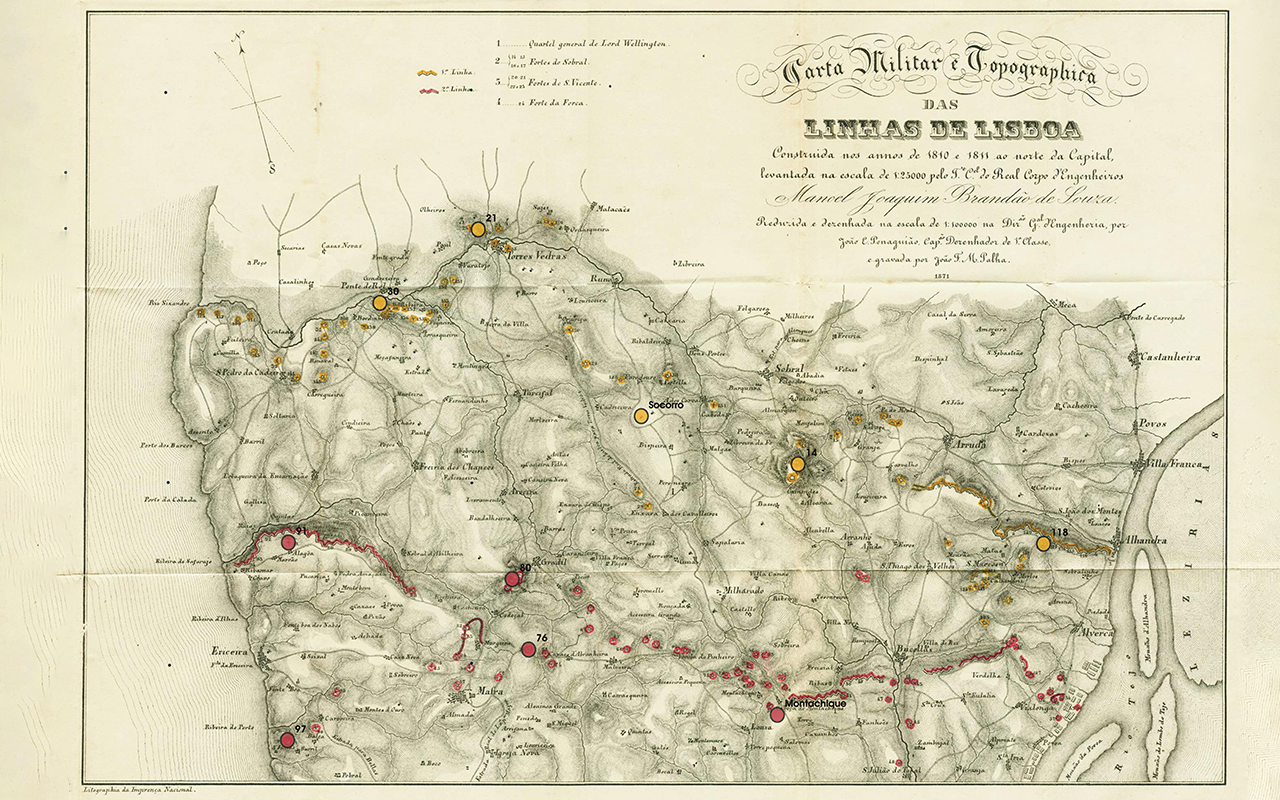THE SEMAPHORE TELEGRAPH
“[…] I sent a message from Alhandra to Mafra using our chain of posts, in – minutes, so there is no fear about the reply, with relatively clear weather”.
There has always been a need for quick communication (even if it used to be less intense and immediate that we require nowadays).
In the late 18th century, countries such as France, Belgium and Britain already used a communication system based on a semaphore telegraph.
Large signal posts sent encrypted messages to one another over great distances aided by telescopes.
At the beginning of the 19th century, fearing a French invasion (which happened not just once, but three times), a Portuguese scientist called Francisco Ciera was tasked with creating a semaphore telegraph system in Portugal.
Ciera’s genius was clear in the way he presented his solutions. The “Indicator Telegraph” that he invented, as well as the “3 balloon telegraph” and the “3 vane telegraph” he designed, were simpler, cheaper, easier to use and quicker than any others in the world at that time.
During the 3rd invasion (1810-1811) secure messages were transmitted using this communication system to send orders, decisions and intelligence quickly and secretly.
It used the system created by Ciera and the British system, also called the “5 balloon telegraph” (or Wellington telegraph) that adapted the codes the British Royal Navy used.
The signals were backed up by messengers.
The Lines of Torres Vedras communication system was established at two prominent points (Serra do Socorro and Montachique) and a network of signalling posts at eight fortifications (four of which are in the municipality of Mafra).
“[…] The Portuguese [telegraph] (which I proposed after examining many others) has only one handle, which turns the pointer (indicator) 45º at a turn in relation to the vertical mast; if lucky, only one man will see it, send the signals and write everything down at the same time as he has a telescope pointing right at the mast. He moves the handle with his left hand and uses his right hand to write the message on a stone […].
At first sight, it may seem impossible to do everything with just 8 signals, but I managed this using a dictionary I composed, with great difficulty, that contains more than 60,000 words or phrases […].
Signals from Lisbon to Mafra were often sent using just 3 telegraphs, one in Monsanto, the 2nd in Sabugo, and the 3rd in the Tapada de Mafra hunting estate.
[…] However […] [His Royal Highness – Prince D. João], ordered that the signals from the ships were sent immediately to the Belém tower and had a 5th telegraph built on the terrace [of Mafra palace] to conveniently see what was happening and to send some signals of his own […]”.
